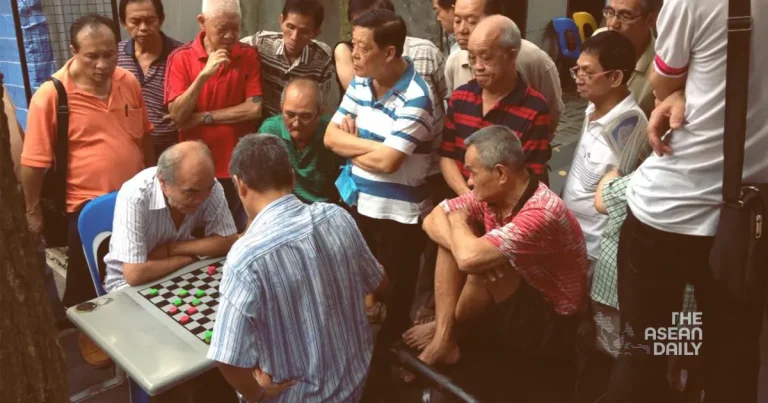6-7-2024 (SINGAPORE) As the silver tsunami sweeps across Southeast Asia, nations are grappling with the profound challenges of rapidly ageing populations. From Singapore’s high-tech solutions to Thailand’s rural struggles, the region faces a demographic shift that threatens to reshape societies and strain economies.
Santokh Singh, a 63-year-old beauty consultant in Kuala Lumpur, epitomises the new reality for many older Asians. Despite surpassing Malaysia’s retirement threshold, Singh continues to work, driven by financial necessity and a desire for personal fulfilment.
“If I’d saved enough for retirement, I would feel confident to ease back since I would be financially secure,” Singh told our correspondent. His aspirations reflect a growing trend among the region’s elderly, who seek to balance financial stability with quality of life as they age.
In Singapore, the challenges of an ageing population are acutely felt by individuals like Lorraine, a 28-year-old only child caring for elderly parents. “Having to watch him deteriorate, from being able to walk and talk to being completely bedridden and almost non-verbal and unable to remember any of us, wasn’t easy for us,” she shared, describing her father’s decline following a series of strokes.
Singapore, with its robust economy and forward-thinking policies, is at the forefront of addressing the ageing crisis. The city-state has allocated S$3.5 billion (US$2.5 billion) over the next decade for its “Age Well SG” programme, focusing on enhancing home-care arrangements and creating elderly-friendly communities.
However, even Singapore’s well-funded initiatives face hurdles. Social isolation remains a significant concern, with the number of residents aged 65 and above living alone reaching 79,000 in 2022, a sharp increase from 58,000 just four years prior.
The situation is more dire in less affluent nations like Thailand. Gaysorn Chobtham, a 76-year-old resident of Surin province, survives on a meagre state allowance of 700 baht (US$19) per month, supplemented by modest earnings from selling sticky rice at local markets.
“It’s not enough to pay for utilities and buy rice and sugar and coconut every month,” Gaysorn lamented. Her story is emblematic of the struggles faced by many elderly Thais, particularly in rural areas where poverty and lack of family support exacerbate the challenges of ageing.
Thailand’s predicament is particularly acute. The country is hurtling towards super-aged society status, with projections indicating that 38% of its population will be over 60 by 2050 – the highest proportion in Southeast Asia for a country of its size.
As traditional family structures evolve and younger generations pursue opportunities in urban centres, the elderly are increasingly left to fend for themselves. This shift is driving innovation in senior living arrangements across the region.
In Malaysia, retirement communities are emerging as a potential solution. John Chia, founder of Millenia Village in Negeri Sembilan, noted that “the need for such assisted-living facilities far exceeds what’s available presently and will grow exponentially in the years ahead.”
These communities offer a blend of independence and support that appeals to many older Malaysians. Singam, a 74-year-old former engineer residing in a Perak retirement village, explained, “Families these days are no longer nuclear like they used to be. Children often have to move to a distant city in pursuit of a career.”
The economic implications of the ageing crisis are profound. Healthcare and pension costs are skyrocketing across the region, while the tax-paying workforce shrinks. This demographic time bomb threatens to upend economic models and social structures that have underpinned Southeast Asia’s rapid development in recent decades.
Experts are calling for urgent action. Dr S. Kantha Ruban Sivalingam, a council member of the Malaysian Healthy Ageing Society, emphasised the need for “proactive government intervention” to address the multifaceted challenges of an ageing society.
As the region grapples with this unprecedented demographic shift, the experiences of individuals like Singh, Lorraine, and Gaysorn underscore the human dimension of the crisis. Their stories reveal a complex tapestry of hope, resilience, and vulnerability that defines ageing in modern Southeast Asia.
The coming decades will test the region’s ability to adapt to this new reality. As populations grey and traditional support systems evolve, Southeast Asian nations must navigate a delicate balance between economic imperatives and social responsibilities. The question remains: can the region age gracefully, or will the silver tsunami overwhelm its shores?




